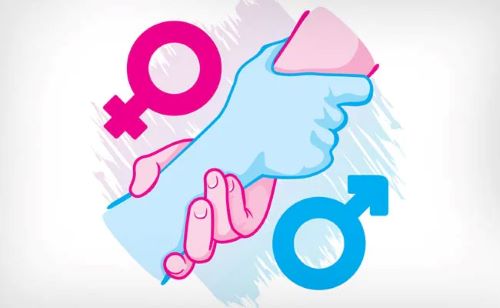Context-
As conversations around gender equality and women’s empowerment gain momentum globally, it is imperative to look into a crucial yet often overlooked issue—the intersection between gender equality and sustainable energy development. The profound connection between gender equality and sustainable energy for all has been extensively studied and documented, highlighting the pivotal role women play in achieving these goals. Here we explore the multifaceted relationship between gender equality and sustainable energy, emphasizing its significance for achieving the Sustainable Development Goals (SDGs) and fostering inclusive and sustainable development.
Gender Equality: A Prerequisite for Sustainable Development
Gender equality is not merely a matter of social justice but also a fundamental prerequisite for sustainable development. Women are central to energy access, production, and consumption, yet they encounter significant barriers that hinder their participation and impact in the energy sector. These gender disparities not only curtail individual opportunities but also impede overall economic growth and environmental sustainability.
Gender Equality in Energy Access
In many regions worldwide, women bear primary responsibility for household energy management, encompassing tasks such as cooking, heating, and lighting. However, studies reveal that energy infrastructure tends to reach women last, exacerbating disparities in energy access. The lack of access to modern energy sources disproportionately affects women and children, compelling them to rely on traditional and harmful alternatives like biomass and kerosene. Household air pollution, primarily caused by these traditional energy sources, contributes to a significant number of premature deaths annually, with women and children bearing the brunt of its health consequences.
Gender Disparity in the Energy Sector
Despite their crucial role in energy access and management, women remain underrepresented in the energy sector, particularly in technical and leadership positions. Globally, women constitute only 32% of full-time employees in the renewable energy sector and a mere 22% in the energy sector overall, starkly contrasting with their 48% representation in the global labor force. In countries like India, where disparities in educational access and limited opportunities for women to acquire technical skills persist, only 10% of women hold technical posts in the energy sector.
Addressing Gender Disparities
Addressing these gender disparities necessitates a paradigm shift in perceptions regarding women's role in the energy sector and concerted efforts to mainstream gender in energy policies. Governments, non-state actors, international institutions, and philanthropic organizations must collaborate to create an enabling environment and implement transformative initiatives aimed at promoting women's meaningful participation in the sustainable energy transition. Initiatives like the Women at the Forefront program and the Energy Transitions Innovation Challenge (ENTICE) provide platforms for women to drive entrepreneurial ventures and advocate for sustainable energy practices.
Harnessing Distributed Renewable Energy
Distributed Renewable Energy (DRE) presents a promising avenue for rapidly expanding energy access and alleviating women's burdens associated with household energy management. Collaborative efforts between state governments and philanthropic organizations in India have led to the deployment of DRE solutions, empowering women and enhancing their productivity. Initiatives like Solar Mamas, pioneered by Barefoot College, exemplify the transformative potential of training women as solar engineers, thereby bringing clean energy to their communities and fostering economic empowerment.
The Economic Case for Gender Equality in Energy
Empowering women in the energy sector not only aligns with principles of social justice but also yields substantial economic benefits. Studies indicate that closing the gender gap in employment and entrepreneurship could significantly boost global GDP. Moreover, increasing women's participation in the energy sector fosters innovation, enhances productivity, and contributes to improved social and environmental outcomes. For instance, data from Powering Livelihoods underscores the substantial contributions of women in adopting clean technology livelihood appliances in India, indicating their potential as drivers of sustainable development.
The Shift in Dialogue: Women as Agents of Change
The discourse on gender and energy has evolved, recognizing women not merely as vulnerable groups but as key agents of change across the energy value chain. Gender-responsive and women-led initiatives in the clean energy space have demonstrated their effectiveness in promoting inclusive and sustainable development. As we commemorate International Women's Day, it is imperative to harness the power of women and energy to create a more inclusive, prosperous, and sustainable world for present and future generations.
Conclusion
In conclusion, gender equality and sustainable energy development are intricately intertwined, with women playing a central role in achieving both objectives. Addressing gender disparities in the energy sector requires concerted efforts to dismantle barriers to women's participation and promote their meaningful engagement. By embracing gender-responsive policies and initiatives, governments, organizations, and communities can unlock the full potential of women as drivers of sustainable development. As we strive for a more equitable and sustainable future, recognizing and amplifying the voices of women in the energy sector is indispensable for building a more inclusive and prosperous world.
|
Probable Questions for UPSC Mains Exam-
|
Source- The Hindu







